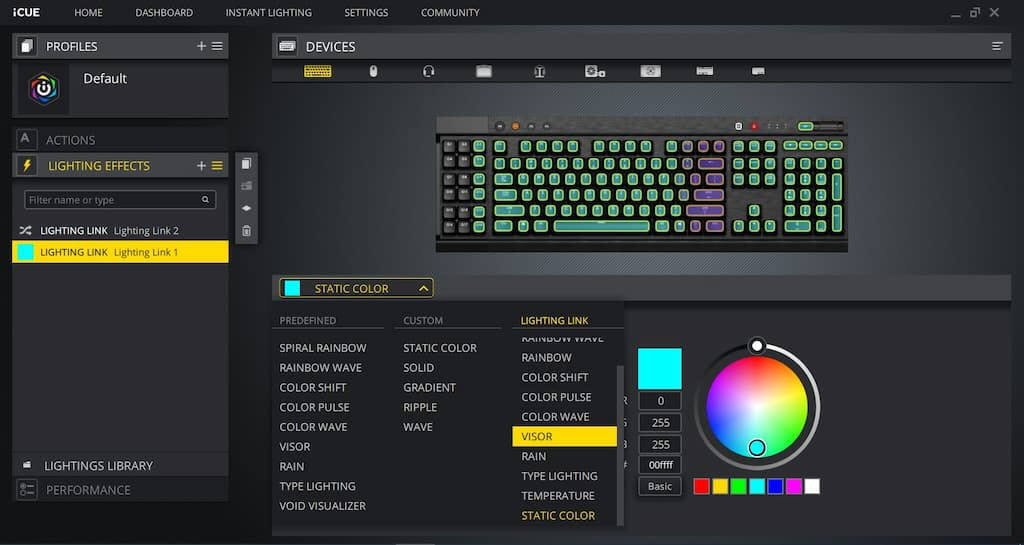Many gamers have run into the Corsair iCUE not working issues, and the common symptoms include iCUE not starting or not detecting any devices. If you’re on the same boat, don’t worry. Though the issues might seem tricky, they’re always fixable.
Try these fixes:
You might not need to try them all. Simply work your way down until you hit the one that does the trick.
- Rebuild the config files
- Reinstall Corsair iCUE
- Reinstall the device driver
- Make sure Windows is up to date
- Check if your system is corrupted
Fix 1: Rebuild the config files
iCUE might not work properly if the config files are corrupted. There’re many reasons to this, and a quick fix you can try is rebuilding all the config files.
Here’s how:
- Make sure iCUE is closed. You can press Ctrl+Shift+Esc to bring up Task Manager to verify.
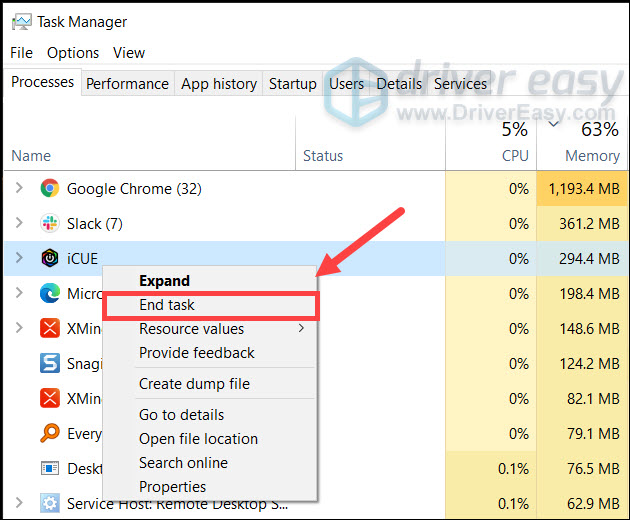
- On your keyboard, press Win+R (the Windows logo key and the R key). In the popped up Run box, type or paste %appdata% and click OK.
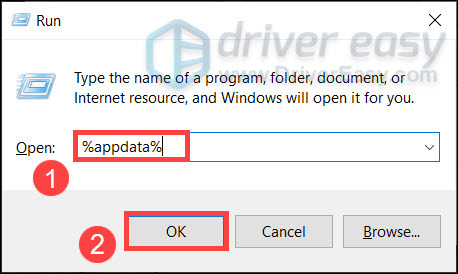
- Cut the Corsair folder and paste it on your Desktop as a backup. Then restart iCUE and it will generate new config files.
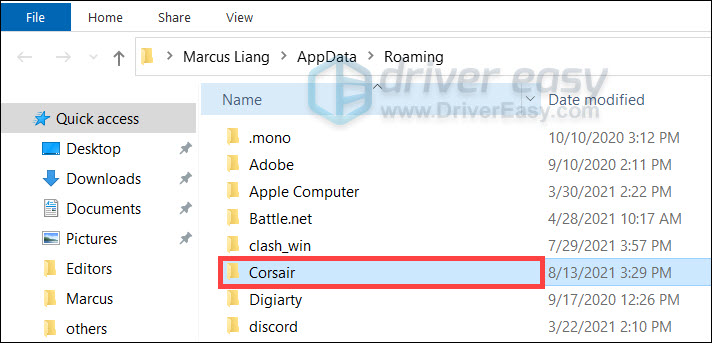
- Now you can check if iCUE is working as expected. If it is, reset your settings in iCUE.
If this trick doesn’t work for you, take a look at the next one below.
Fix 2: Reinstall Corsair iCUE
The issue could also mean there’s something wrong with the program itself. Issues could come up during installation or an update. You can try to reinstall the software and see how it goes.
- On your keyboard, press Win+R (the Windows logo key and the R key). Then type or paste appwiz.cpl and click OK.
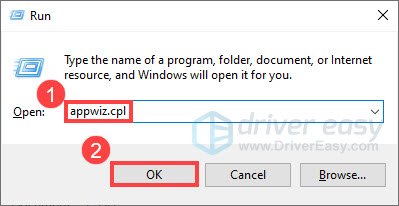
- Right click CORSAIR iCUE 4 Software and select Uninstall. Once done, restart your computer.
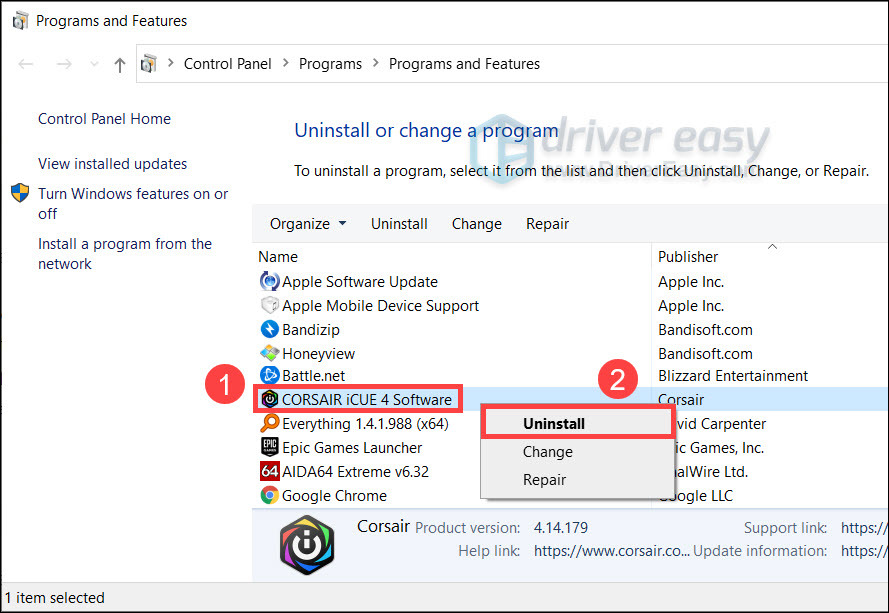
- Go to the iCUE download page and get the latest version of iCUE.
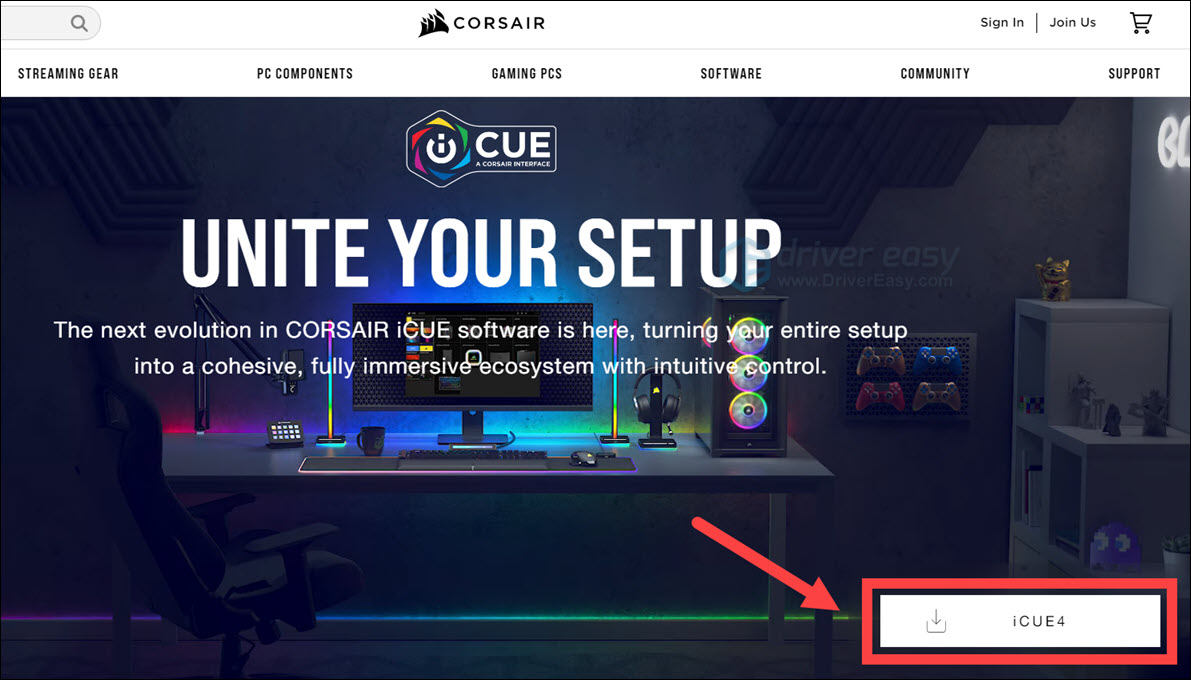
Once the installation completes, launch iCUE and see if the reinstallation solved your issue.
If this doesn’t do the trick, check out the next fix.
Fix 3: Reinstall the device drivers
iCUE relies on drivers to control your gears, so it’s also likely that you’re in fact having a driver issue. You can try to reinstall the device drivers and see if that works for you.
Uninstall the driver
- On your keyboard, press Win+R (the Windows logo key and the R key) to invoke the Run box. Type or paste devmgmt.msc and click OK.
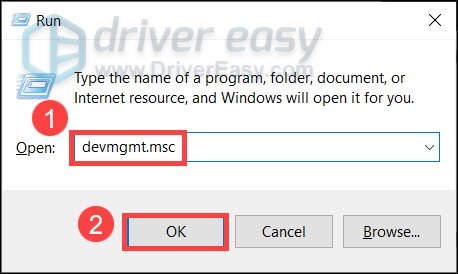
- In Device Manager, click to expand the category and locate your device (For example you can see Audio inputs and outputs for headset drivers). Then right-click and select Uninstall device.
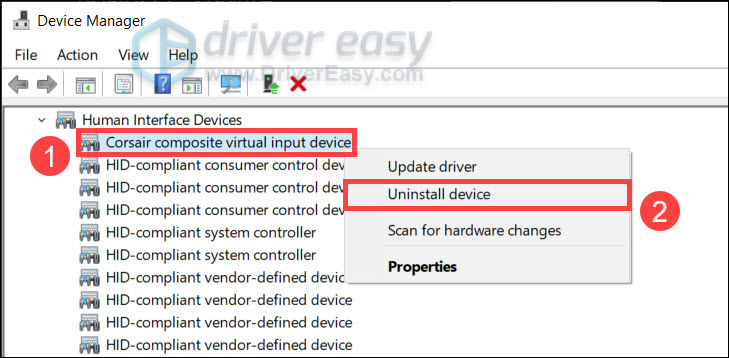
- In the pop-up window, select Delete the driver software for this device and click Uninstall.
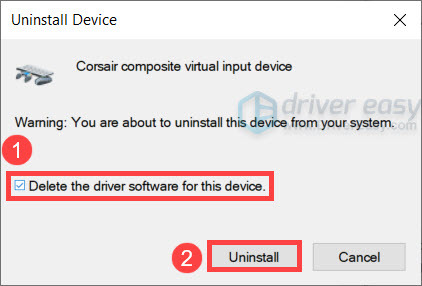 Uninstalling drivers could stop your device from working. Normally it’d be fixed after a reboot. But if you want to minimize the risk, you can try to update your drivers instead.
Uninstalling drivers could stop your device from working. Normally it’d be fixed after a reboot. But if you want to minimize the risk, you can try to update your drivers instead. - Restart your PC and check if iCUE works now.
Usually Windows would install the generic drivers when booting up. But if it doesn’t or the generic drivers aren’t working, you can continue to update your drivers.
Update your drivers
In most cases, updating drivers can have the same effect as reinstalling. You can update your drivers manually, by visiting the Corsair website, downloading the driver installer for your device and installing step by step. But if you’re not comfortable playing with device drivers, you can update automatically with Driver Easy.
Driver Easy will automatically recognize your system and find the correct drivers for it. You don’t need to know exactly what system your computer is running, you don’t need to risk downloading and installing the wrong driver, and you don’t need to worry about making mistakes when installing.
You can update your drivers automatically with either the 7 days free trial or the Pro version of Driver Easy. It takes just 2 clicks, and you get full support and a 30-day money-back guarantee with the Pro version:
- Download and install Driver Easy.
- Run Driver Easy and click the Scan Now button. Driver Easy will then scan your computer and detect any problem drivers.
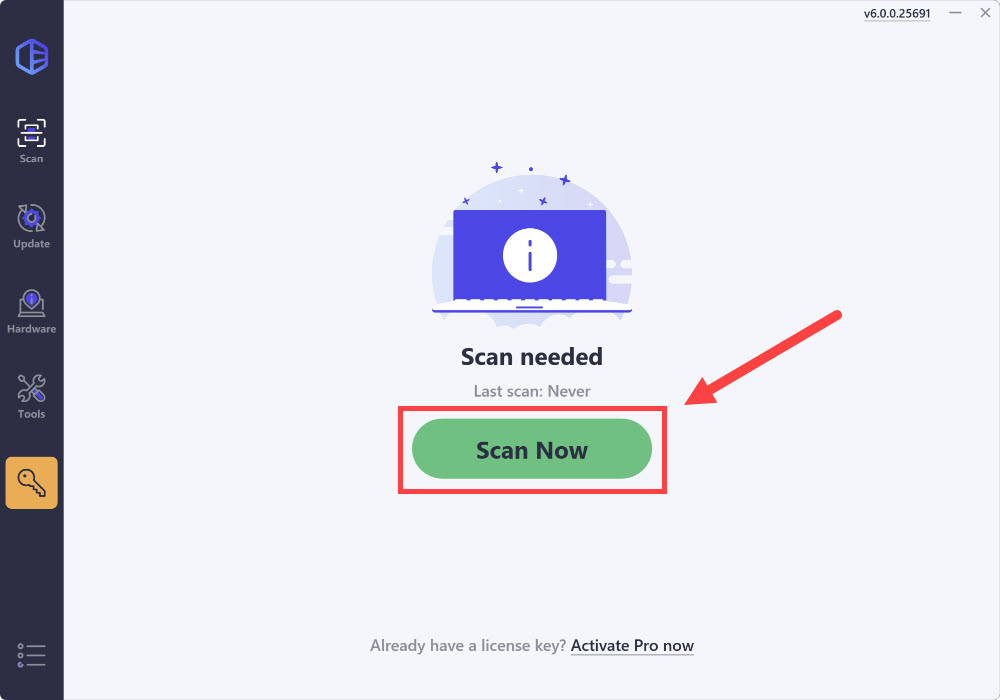
- Click the Activate & Update button next to the flagged device to automatically download and install the correct version of this driver.
Or click Update All to automatically download and install the correct version of all the drivers that are missing or out of date on your system (You’ll need the Pro version for this – when you select Update All, you’ll get a prompt to upgrade. If you’re not prepared to purchase the Pro version yet, Driver Easy provides a 7-day trial at no cost, granting access to all Pro features like fast downloads and easy installation. No charges will occur until after your 7-day trial period ends.)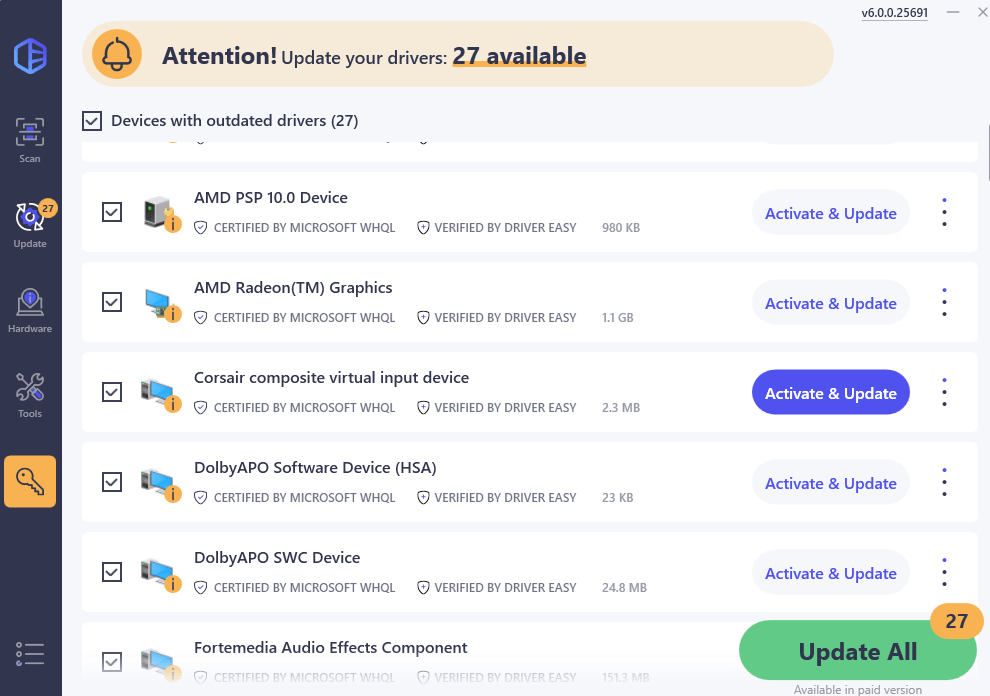
- After updating, restart your computer to take effect.
Once you’ve updated all your drivers, restart your PC and check if iCUE is working.
If the latest drivers can’t help you fix the issue, you can move on to the next solution.
Fix 4: Make sure Windows is up to date
Besides drivers, you should always make sure your system is up to date so that there won’t be compatibility issues. Usually the update happens automatically, but you can also check manually to make sure.
- On your keyboard, press Win+I (the Windows logo key and the i key) to open the Windows Settings app. Click Update & Security.
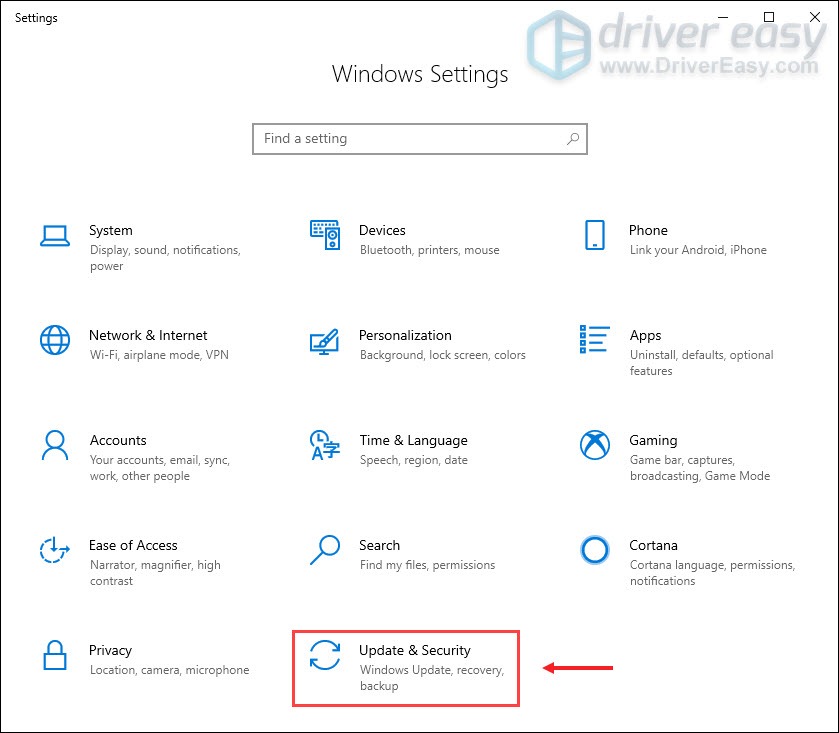
- Click Check for updates. Windows will then download and install the available patches. It might take some time (up to 30 mins).
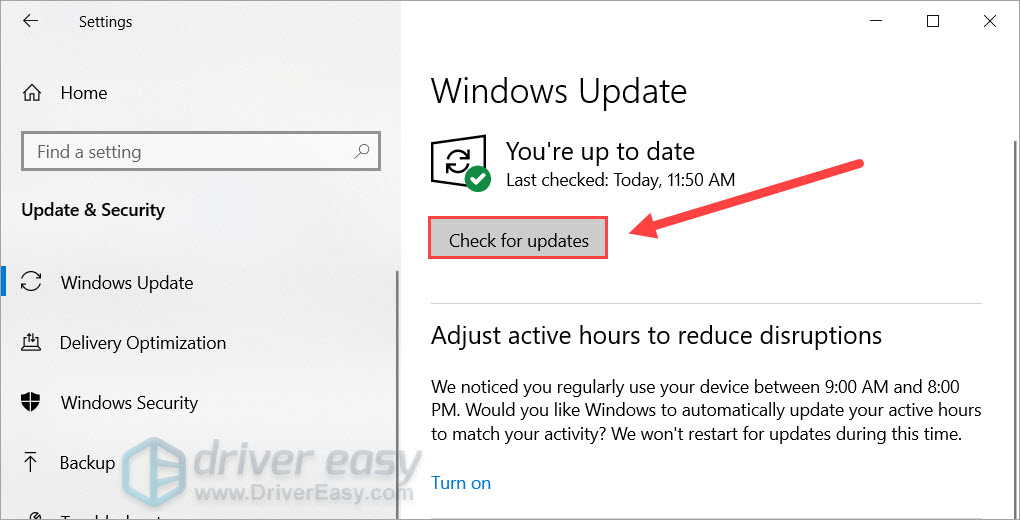
Fix 5: Check if your system is corrupted
The iCUE not working issue could mean that you’re using a corrupted system. This could happen when critical files are broken or missing. The worst case, you will need a clean reinstall of Windows.
But before that, you can run a holistic checkup with Fortect to determine what went wrong. Fortect is a professional system repair kit that could scan and fix your computer issues automatically.
- Download and install Fortect.
- Open Fortect. It will run a free scan of your PC and give you a detailed report of your PC status.
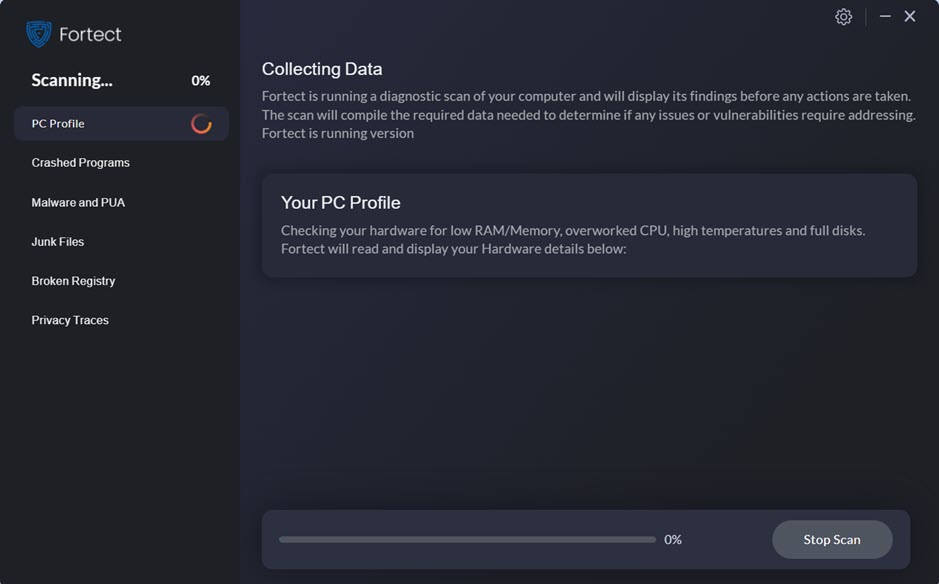
- Once finished, you’ll see a report showing all the issues. To fix all the issues automatically, click Start Repair (You’ll need to purchase the full version. It comes with a 60-day Money-Back Guarantee so you can refund anytime if Fortect doesn’t fix your problem).

Hopefully this post helps you solve the iCUE not working problem. If you have any questions, feel free to leave a message in the comments below.






